7 flowers to plant around a bird bath – for the most beautiful, bird-filled corner of the garden
Surround your bird bath with blooms birds love – for a garden that's as vibrant as it is inviting

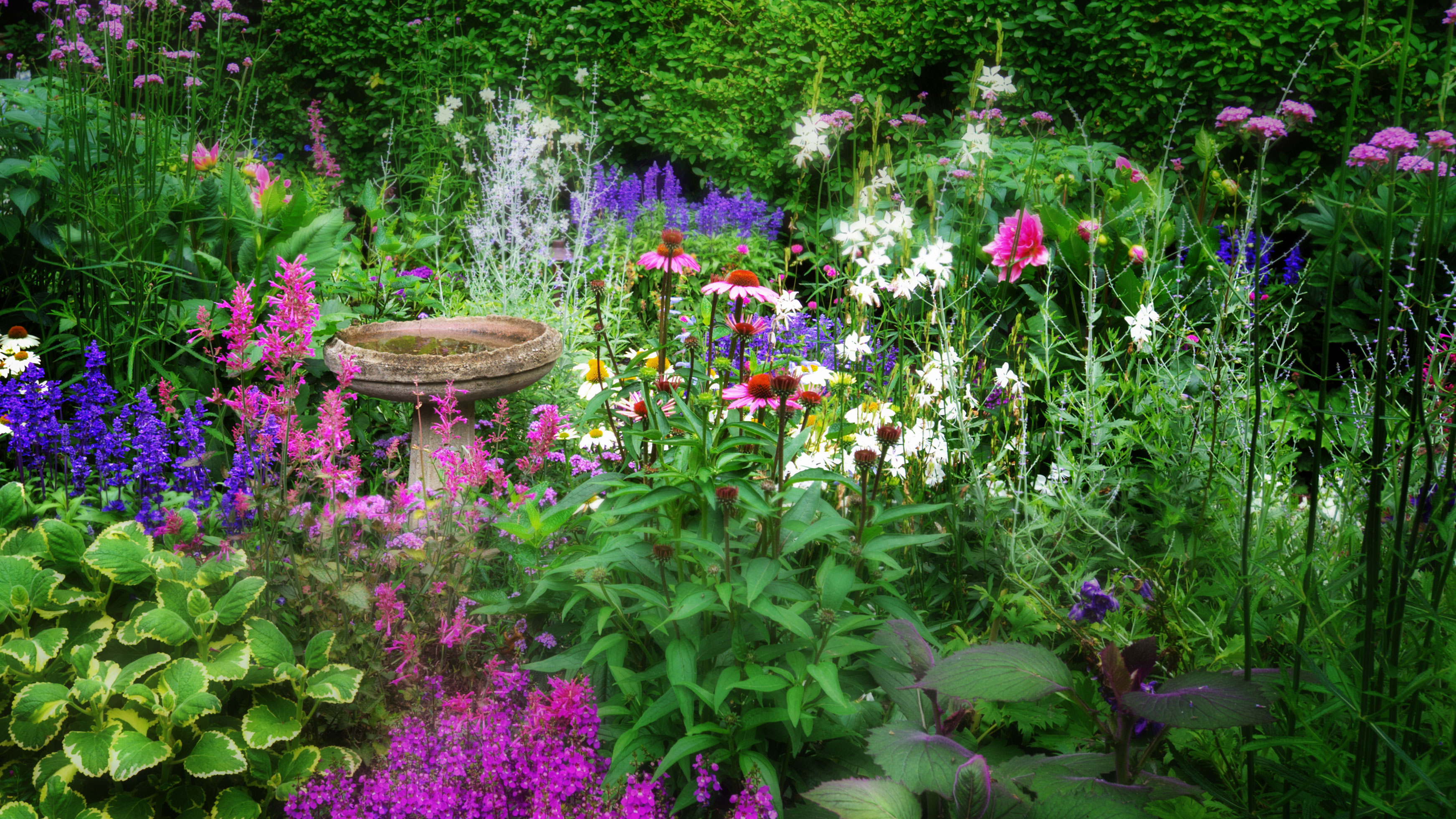
I've found that a bird bath can be one of the most charming and rewarding additions to my yard. But for me, the beauty of a bird bath isn’t just about how it looks – when placed thoughtfully and in the right location, it becomes a vital watering spot that supports local wildlife and invites birds to visit throughout the year.
Learning where to place a bird bath makes all the difference: choose a spot with some nearby cover for safety, partial sunlight to keep the water fresh, and easy visibility so you can enjoy the visitors it attracts.
If you're like me and want to make the most of your bird bath this summer, planting flowers around it is a simple yet powerful way to create a more natural, welcoming space for wildlife. The added blooms not only boost the visual appeal but also help birds feel safer and more at home.
Whether you're hoping to attract hummingbirds, support pollinators, or just create a more vibrant garden setting, here are some of the best flowers I’ve found to plant around a bird bath.
1. Salvia – a hummingbird favorite with lasting summer color
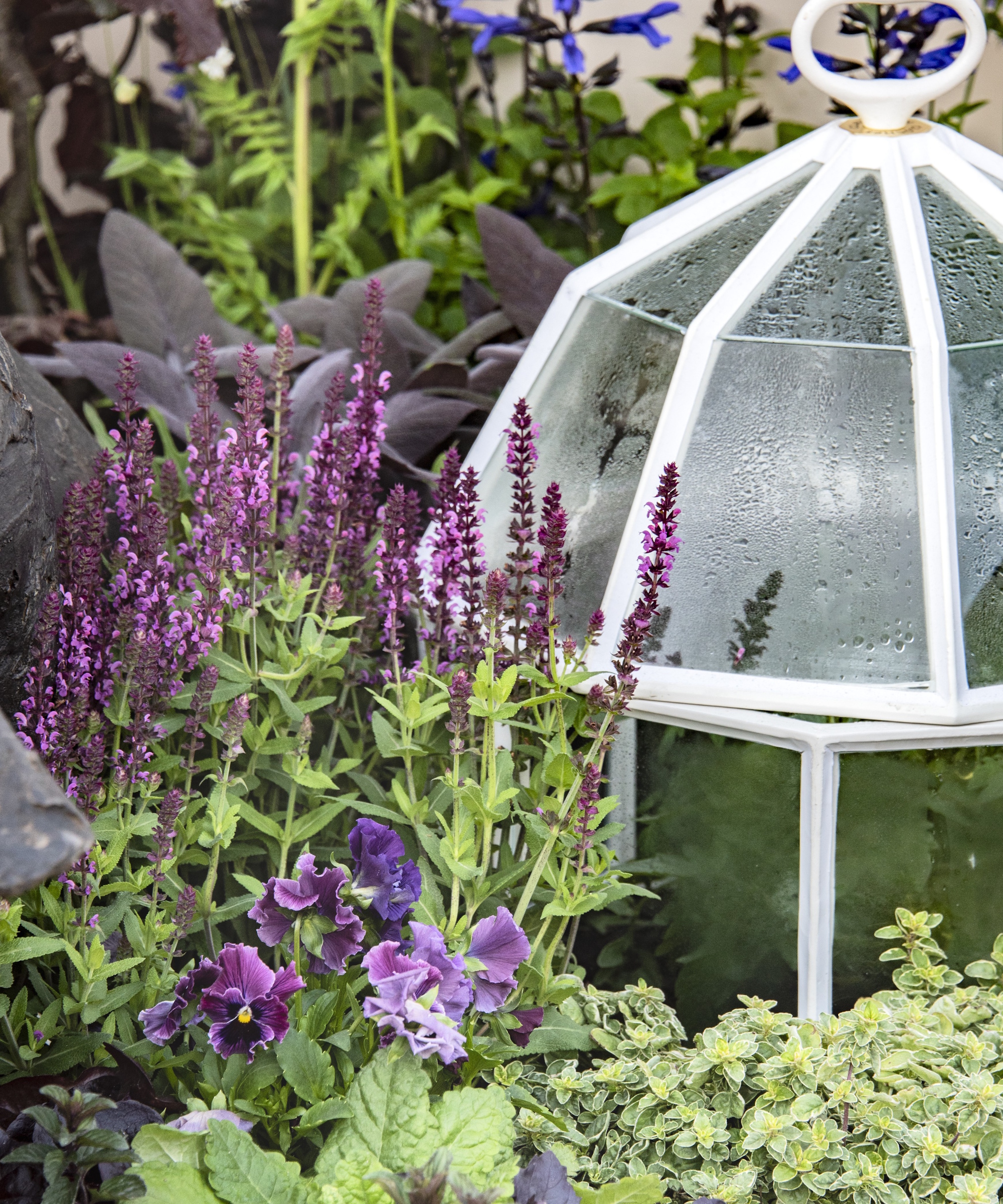
If you're looking to entice hummingbirds to your bird bath, growing salvias nearby is a smart and beautiful choice. With their tall spires in rich shades of red, purple, and blue, salvias offer both visual appeal and a reliable source of nectar throughout the warmer months.
'Nectar-rich tubular flowers like salvias are ideal for tempting hummingbirds,' says Homes & Gardens horticulture expert Thomas Rutter. 'Their elongated shape perfectly matches the hummingbird’s slender, specialized beak, allowing these birds to access the sweet nectar deep inside easily.'
Salvias not only bloom profusely but also draw attention with their bold colors, especially reds and pinks, which hummingbirds are naturally drawn to. Planted around a bird bath, they create a vibrant, inviting environment that encourages regular visits. By surrounding your bird bath with these nectar-packed blooms, you’ll turn it into more than just a water source – you’ll create a hummingbird hotspot right in your own backyard.
Design expertise in your inbox – from inspiring decorating ideas and beautiful celebrity homes to practical gardening advice and shopping round-ups.
2. Echinacea (Coneflower) – to nourish birds into fall
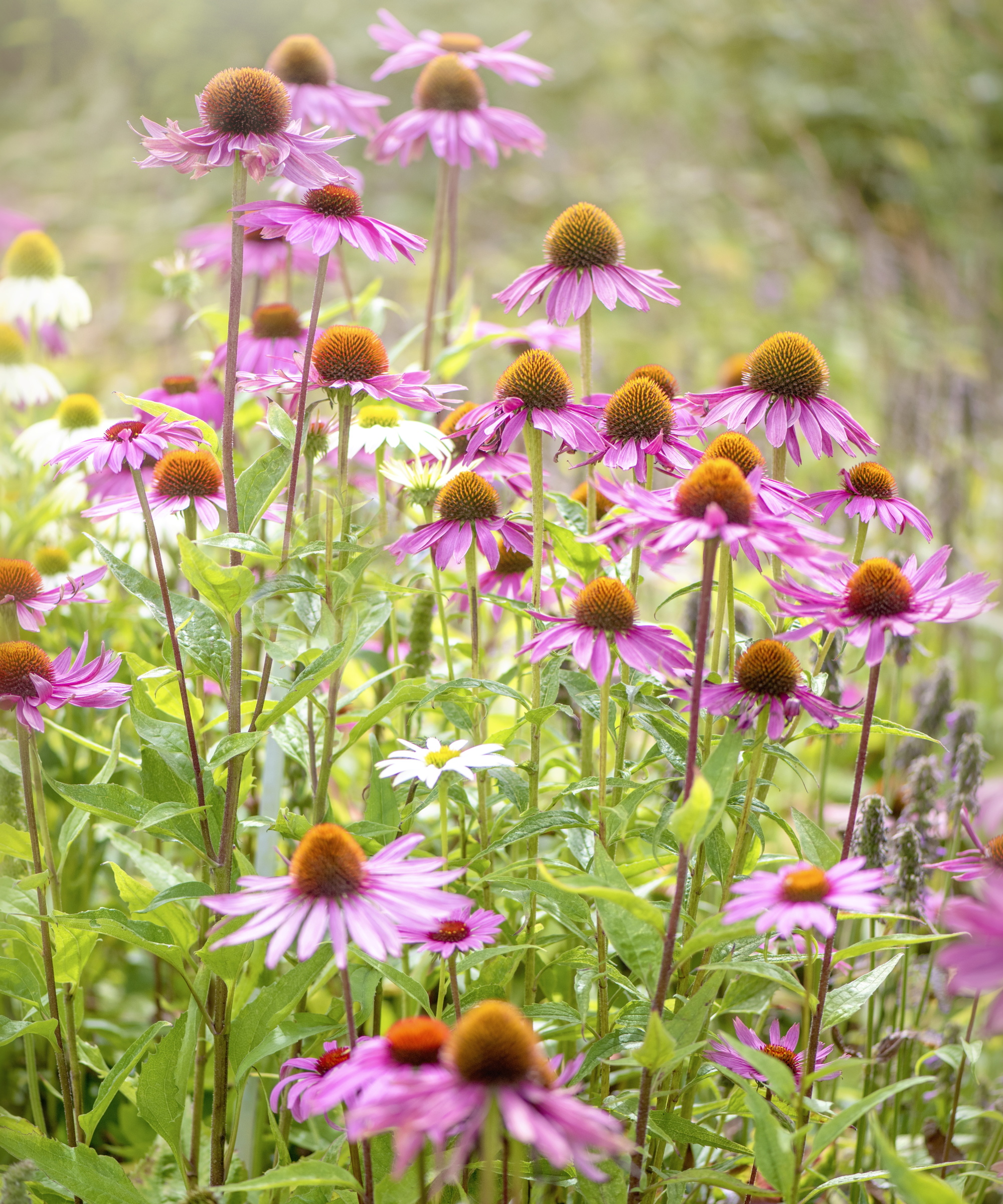
Echinacea, or coneflower, is a striking addition to any bird-friendly garden, especially around a bird bath. These daisy-like perennials provide vibrant color in summer and transition seamlessly into a natural food source as the seasons shift.
While their bright blooms attract pollinators during the warmer months, the real magic happens once the petals fade. The prominent seed heads remain standing well into fall and winter, becoming a reliable food source for goldfinches and other small songbirds. Their sturdy structure also adds texture and interest to your garden’s winter landscape.
By growing Echinacea near your bird bath, you’re not only enhancing the space visually but also offering year-round support to birds – water, nectar, and seeds – all in one spot. The Back To The Roots Purple Coneflower seeds are highly rated on Amazon.
3. Black-eyed Susan (Rudbeckia) – cheerful blooms with lasting benefits
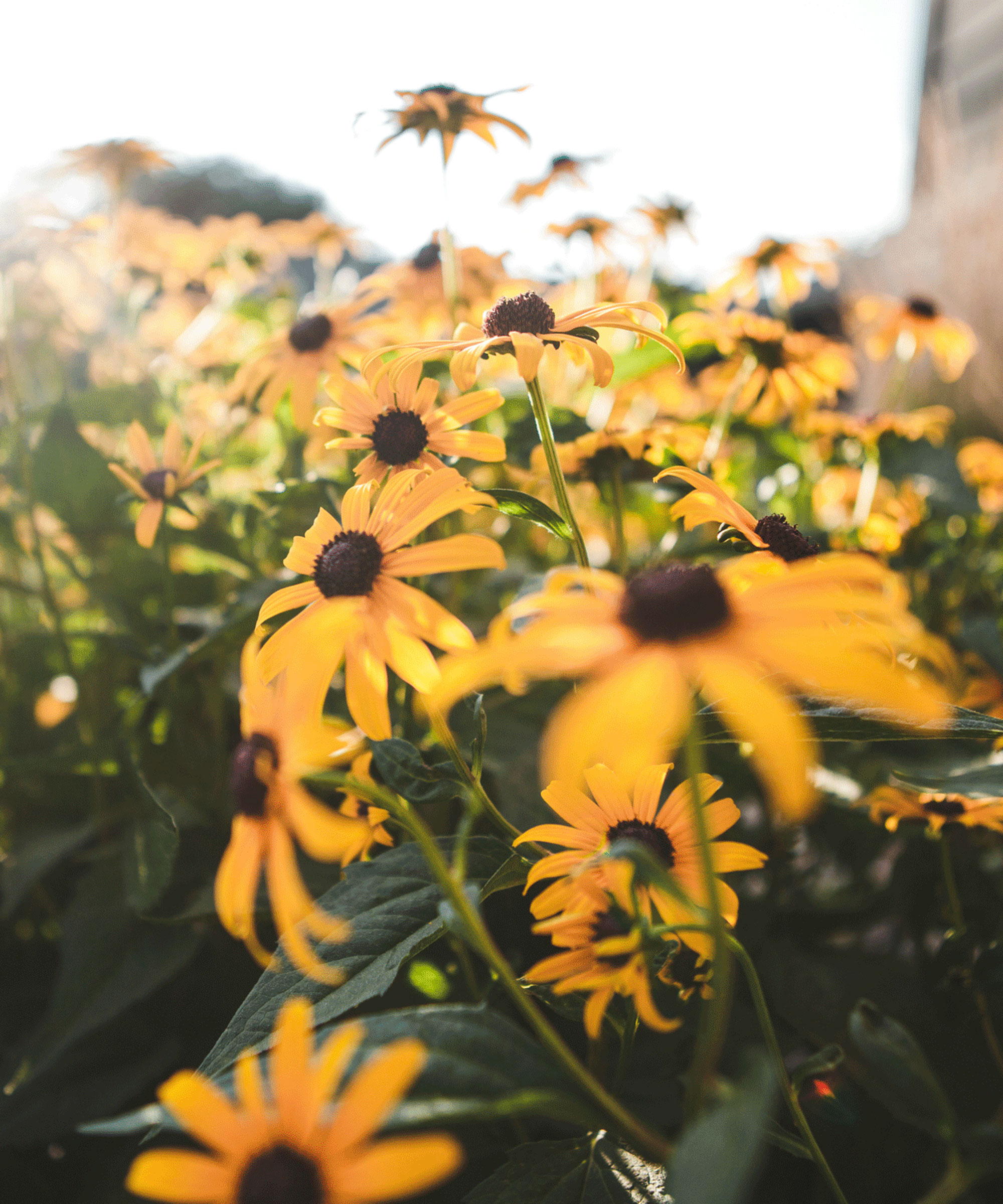
Planting Black-eyed Susans around your bird bath adds a burst of golden color in late summer – and much more than just visual charm. Their signature yellow petals and dark central cones create a warm, inviting atmosphere for both birds and humans alike.
Beyond their blooming season, these hardy perennials continue to serve the garden. Much like echinacea, their prominent seed heads become a natural buffet for finches and other seed-loving birds as summer turns to fall. Even after a frost, their upright stems and dark cones provide striking structure, adding visual interest while continuing to support wildlife.
With both beauty and function, Black-eyed Susans are a low-maintenance way to make your bird bath area a welcoming hub for birds across the seasons.
4. Lavender – silvery mounds with lasting fragrance and pollinator charm
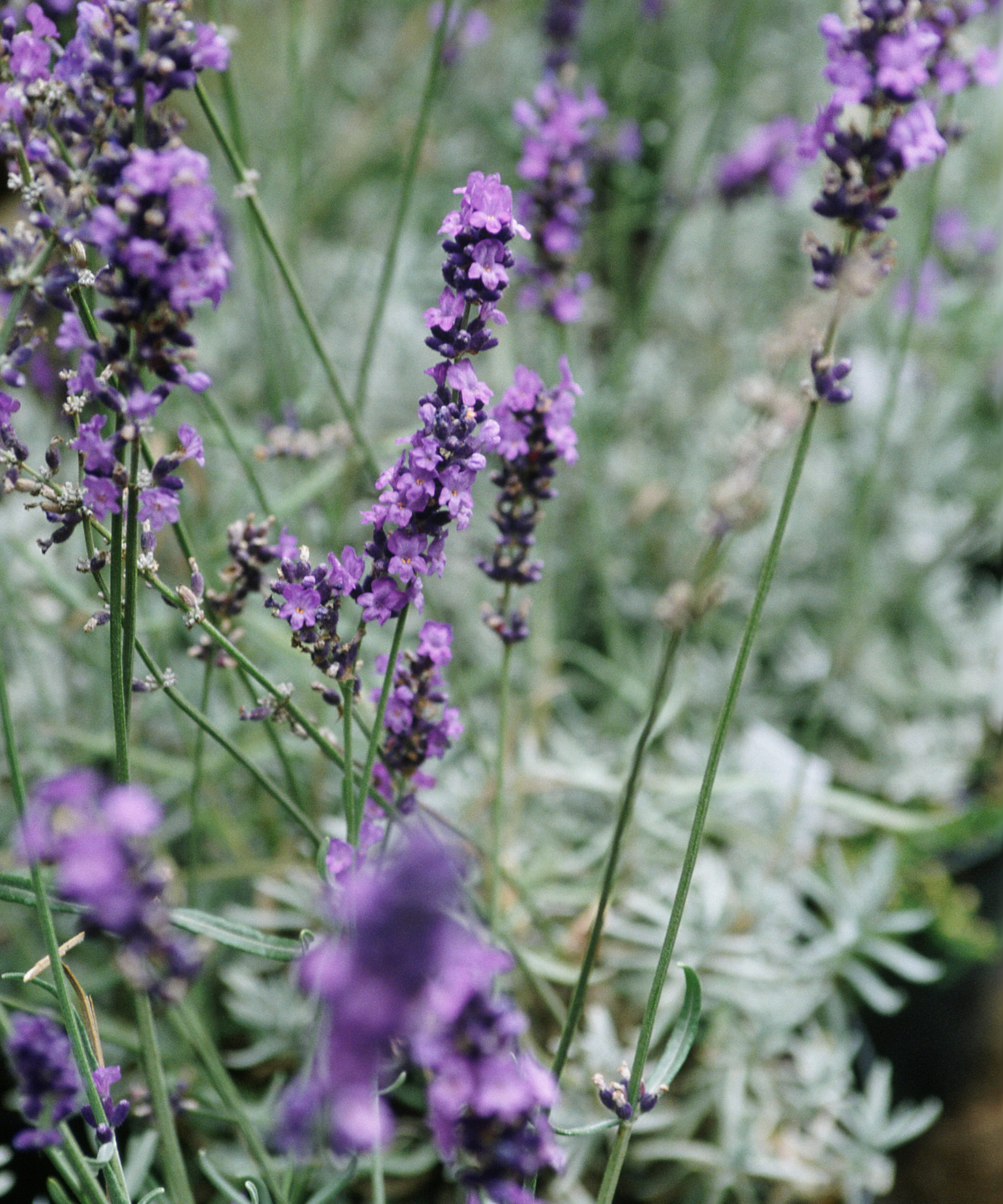
Lavender is a timeless garden favorite and a perfect companion for a bird bath planting. Its soft, silver-green foliage and calming scent create a serene atmosphere, while its tidy, rounded form gently frames the base of a bird bath without overpowering the space.
Beloved by bees and butterflies, growing lavender will offer extended blooms and subtle movement throughout the summer. Its drought tolerance and low-maintenance nature make it ideal for sunny, dry spots where other plants may struggle.
Surrounding your bird bath with lavender enhances the garden’s atmosphere with a calming scent and silvery texture, while also drawing in bees and other beneficial pollinators.
5. Agastache – fragrant spires that attract and protect
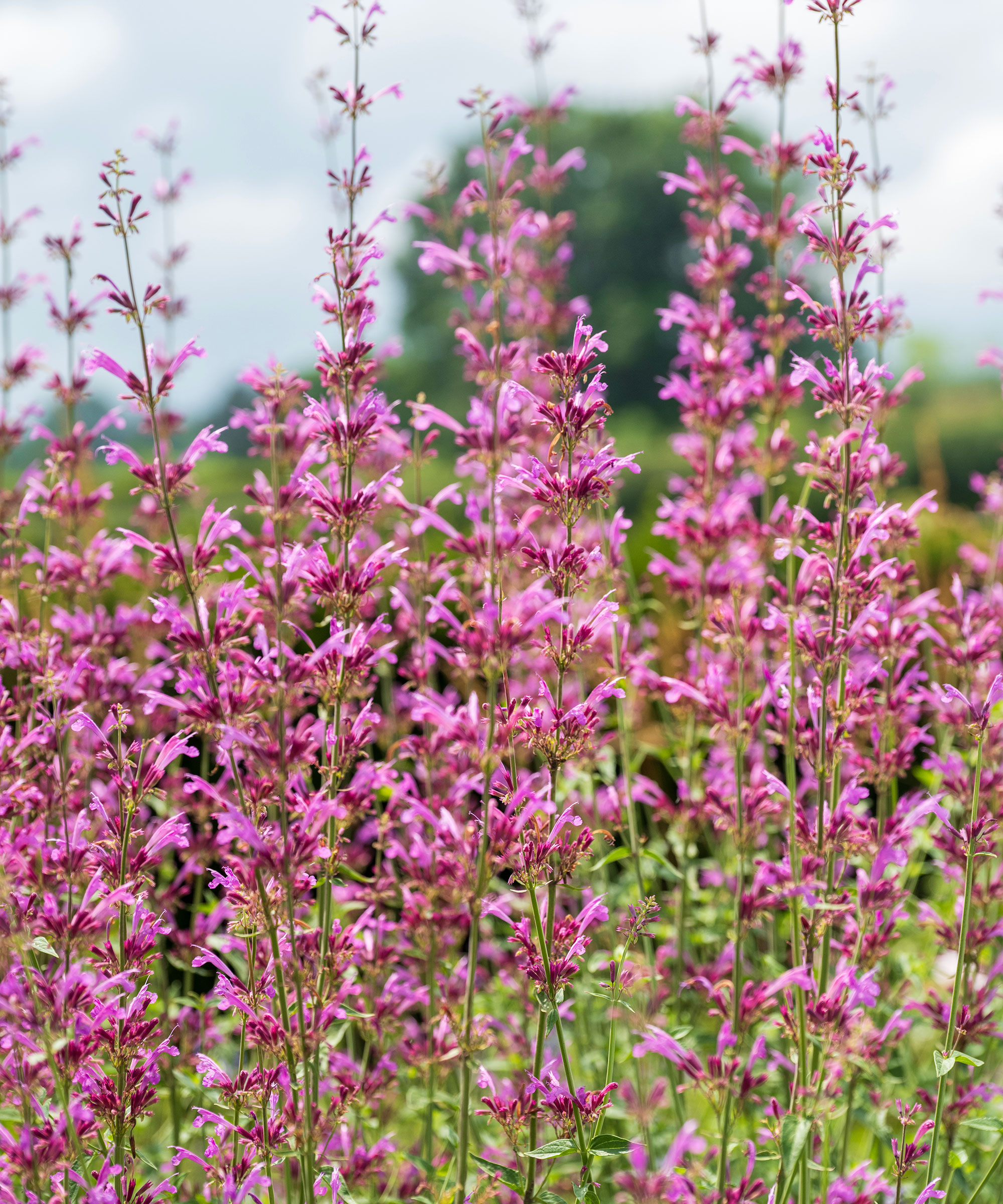
Agastache, also known as hyssop or hummingbird mint, is a fantastic choice for planting around a bird bath. With its tall, spiky blooms in shades of lavender, pink, and orange, it brings vertical interest and movement to the space, while attracting pollinators in droves.
Thriving in sunny, well-drained spots, Agastache is a magnet for both bees and hummingbirds. Its long, tubular flowers are perfect for slender hummingbird beaks, offering a rich nectar source throughout the summer months. Even better, its fragrant, anise-scented foliage helps repel garden pests, making it as practical as it is beautiful.
6. Bee Balm (Monarda) – wild color and pollinator power
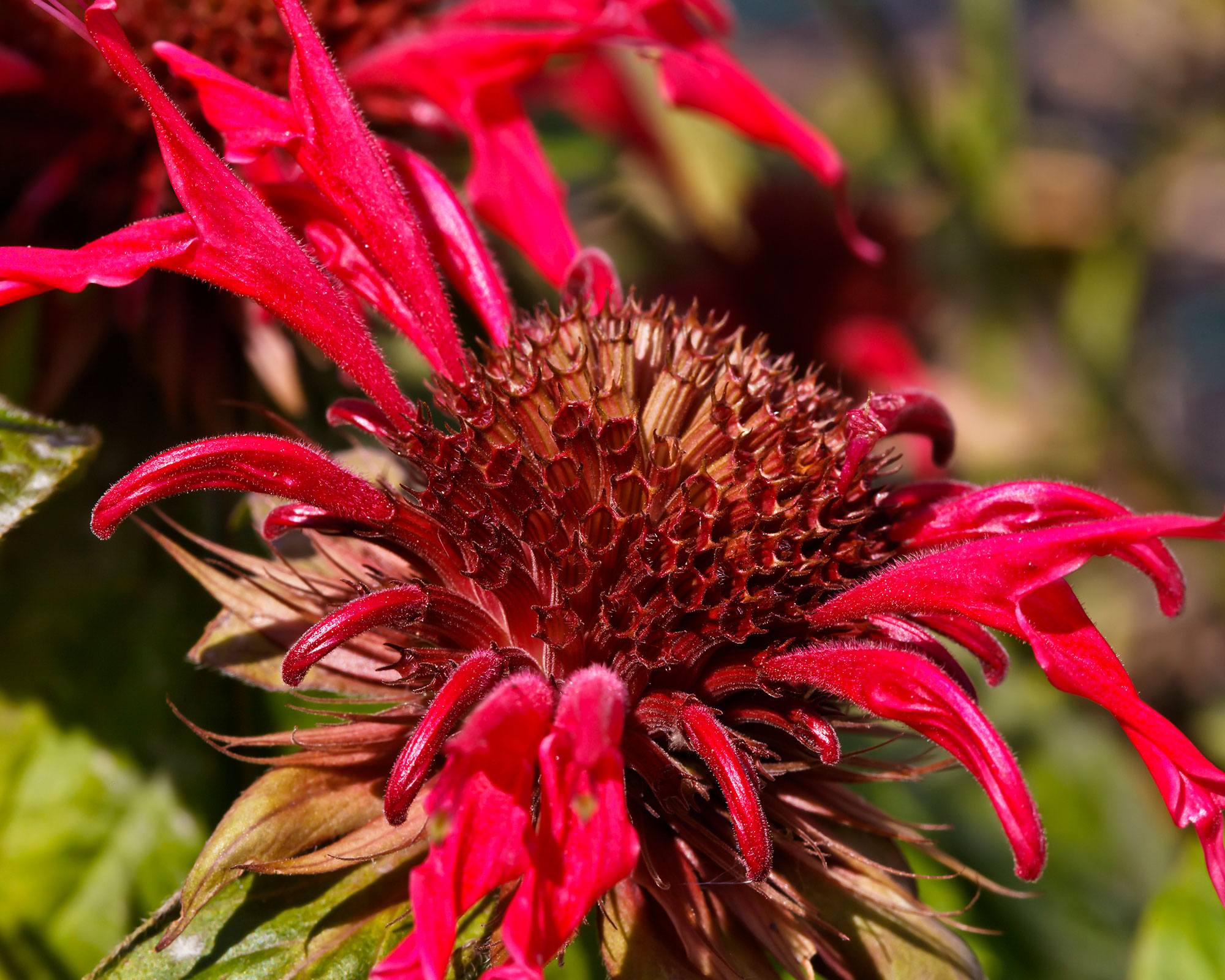
Bee balm is a bold, fragrant addition to any bird bath planting scheme, bringing a burst of untamed energy with its vivid, firework-like blooms. In shades of scarlet, fuchsia, and deep pink, its dramatic flowers are a favorite of hummingbirds, bees, and butterflies alike.
With a slightly wild, cottage-garden aesthetic, bee balm adds a naturalistic charm that contrasts beautifully with the structure of a bird bath. Its aromatic foliage offers an added sensory layer, and its ability to thrive in sunny spots makes it as reliable as it is eye-catching.
By growing bee balm near your bird bath, you're creating a vibrant, wildlife-friendly focal point that hums with activity all summer long.
7. Lantana – vibrant clusters for sunny, warm spots
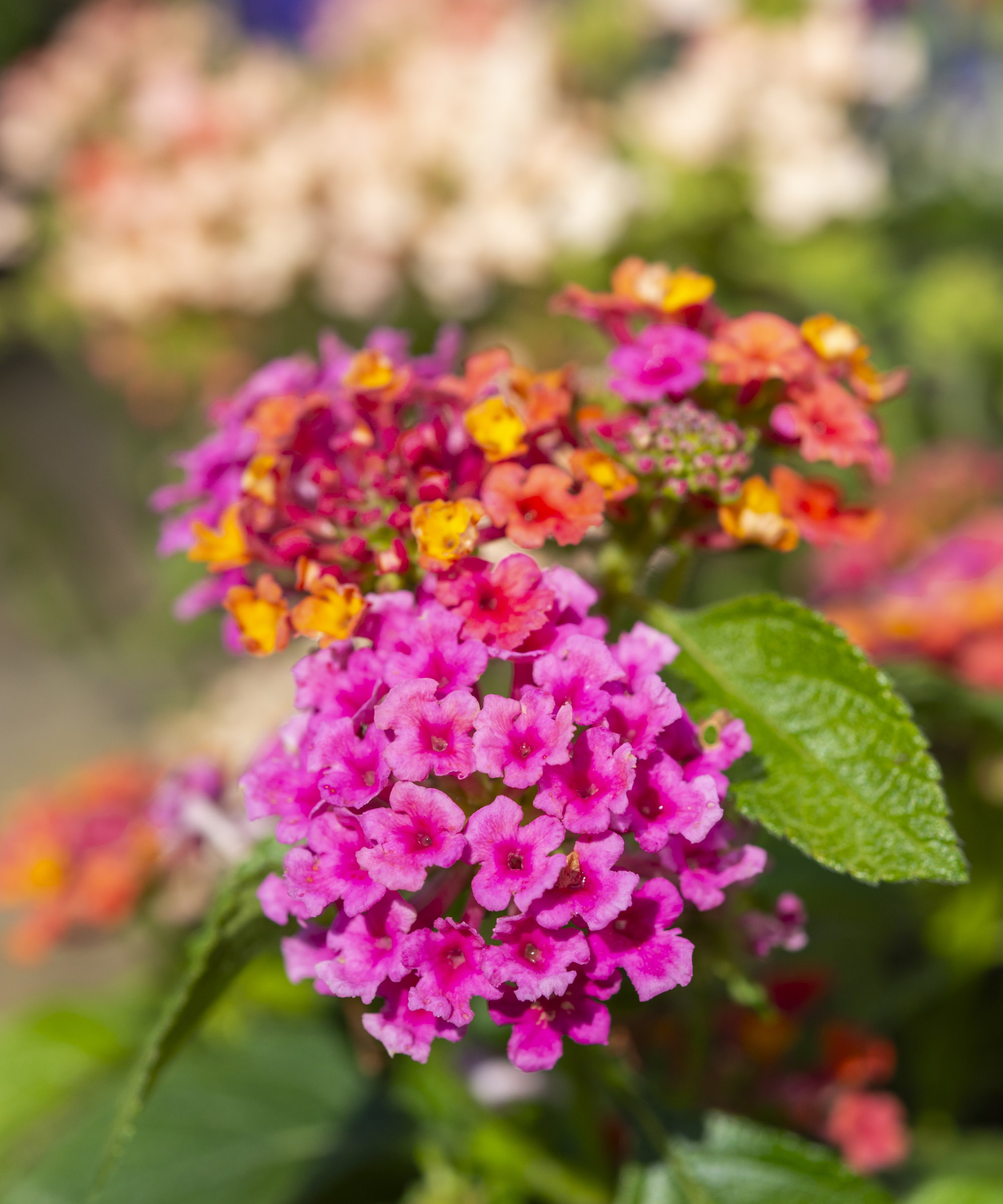
Lantana thrives in hot, sunny climates, making it an excellent choice for planting around bird baths in warmer regions. Its bright clusters of flowers bloom continuously from spring through fall, providing a long-lasting splash of color.
Rich in nectar, lantana is a magnet for both hummingbirds and butterflies, turning your bird bath area into a lively hotspot for pollinators. Its spreading habit also helps fill borders and ground space, creating a dynamic and inviting environment.
By adding lantana, you ensure that your garden stays vibrant and buzzing with wildlife even during the hottest months.
‘A flora-dense space will not only look abundant, but it will create a little wildlife hub right there in your yard,’ says Thomas Rutter. ‘Mix shrubs, perennials, and ground covers, and leave enough space around the bath so birds feel safe.’
With the right planting, every flower serves a purpose – offering food, shelter, or seasonal beauty. Together, they transform a simple bird bath into a vibrant, living centerpiece that brings joy to both birds and garden lovers alike.
What to shop for
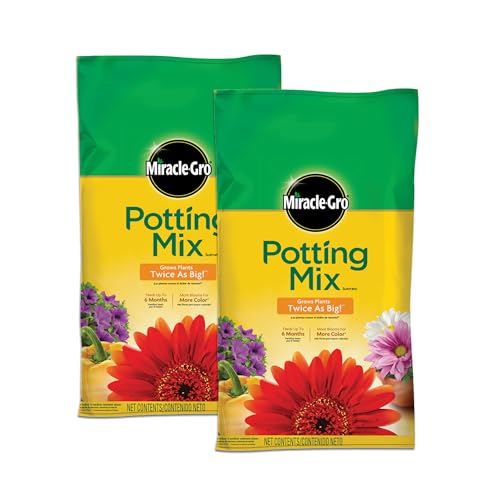
Attract hummingbirds and boost vibrant blooms with Miracle-Gro Potting Mix. Formulated to feed container plants for up to six months, it helps summer flowers grow bigger, brighter, and more beautiful. Ideal for hanging baskets, window boxes, and pots, this rich mix promotes strong roots and lush, colorful flowers that pollinators can’t resist.
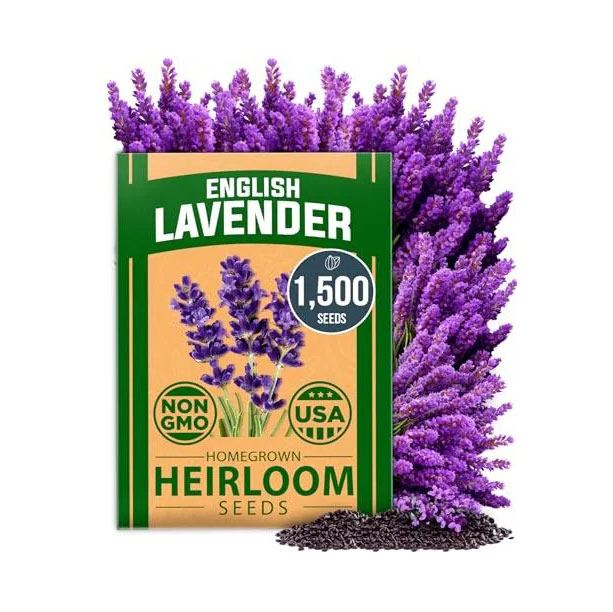
Attract bees, butterflies, and even birds to your garden with 1,500 heirloom English Lavender seeds. These non-GMO, high-germination seeds grow into fragrant blooms loved by pollinators, making them perfect for borders, pathways, or pots. A beautiful, low-maintenance way to support local wildlife and add soothing scent to your space.
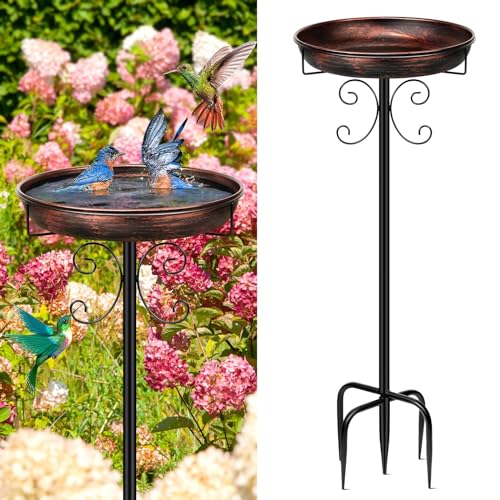
Crafted for durability and designed with birds in mind, this heavy-duty metal bird bath features a rustproof finish and an upgraded 5-prong base that ensures exceptional stability in your garden. The generous 12" bowl holds ample water or can accommodate a solar fountain to create movement and attract even more feathered visitors.

Jennifer is the Digital Editor at Homes & Gardens, bringing years of interiors experience across the US and UK. She has worked with leading publications, blending expertise in PR, marketing, social media, commercial strategy, and e-commerce. Jennifer has covered every corner of the home – curating projects from top interior designers, sourcing celebrity properties, reviewing appliances, and delivering timely news. Now, she channels her digital skills into shaping the world’s leading interiors website.